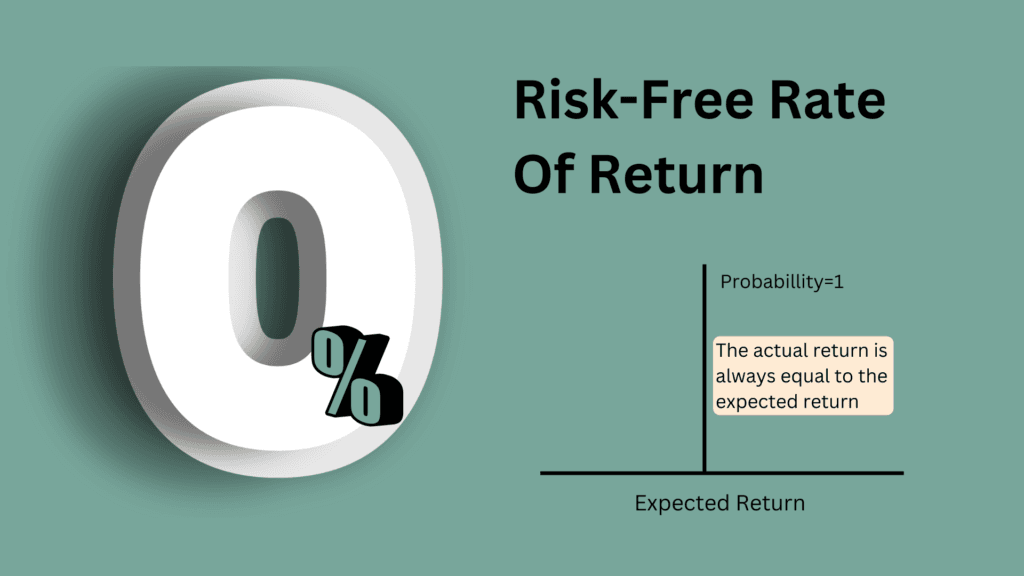Risk-free Rate is the expected return that an investment will yield without any risk. The actual return is always equal to the expected return.
Table of Contents
What Is the Risk-Free Rate of Return?
To understand what makes an asset risk-free, let us go back to how risk is measured in investments. Investors who buys assets have return that they expect to make over the time horizon but the actual return they make might be different from expected return, and this is where risk comes in. Risk in finance is viewed as in terms of the variance in actual returns around the expected returns. For an investment to be risk-free, then, the actual return should always be equal to expected return.

Why Do Risk-Free Rates Matter?
The risk-free rate is a building block for estimating both the Cost of Equity and Capital. In addition, the risk-free rate helps in determining the right rates of return for investment strategies and in pricing financial instruments. For example, because it is a crucial component of pricing models, it affects the prices of bonds, options, and derivatives. Cost-of-capital calculations also take the risk-free rate into account. It assists businesses in evaluating the necessary return on investment projects and figuring out the best capital structure based on what the business could make if it decided not to take on any risk.
Requirement For An Investment To Be
Risk-Free
The first is that there can be no default risk. Essentially, this rules out any securities issued by private entity, since even the largest and safest firms have some measures of default risk. The only securities that have a chance of being risk-free is the governmnet securities, not because governments are better run than corporation but because they can print money.
Second condition that is often forgotten, for an investment to have an actual return equal to its expected return, there can be no reinvestment risk. To illustrate this, suppose you are trying to estimate return over a five-year period and you want a risk-free rate. A six-month T-bill, while default-free, is not risk-free, as there is the reinvestment risk of not knowing what the T-bill rate will be in six months. Since, the coupon of the bond that need to be reinvested at the rates that cannot be predicted today.
Asset Pricing Using Risk-free Rate
Risk-free rate is the key component when it comes to valuation models such as the capital asset pricing model (CAPM). The expected returns of risky assets are compared to the risk-free rate, which serves as the baseline rate of return. The CAPM states that the risk premium, which rewards investors for taking on more risk, is added to the risk-free rate to calculate the expected return of an asset. Therefore, the required rate of return for risky assets is affected directly by changes in the risk-free rate.
Closing Thoughts
The rate of return that an investor would anticipate from a risk-free investment is known as the risk-free rate of return. A higher rate of return is a requirement for any investment with a risk level higher than zero. In reality, there is no such thing as this rate of return because all investments involve some degree of risk, even if it is minimal.
Due to the low risk of government default, the three-month U.S. Treasury bill is frequently used as a stand-in for a risk-free rate of return in U.S. markets. Other proxies, like euros or Swiss francs, may be used by other nations and economic zones.